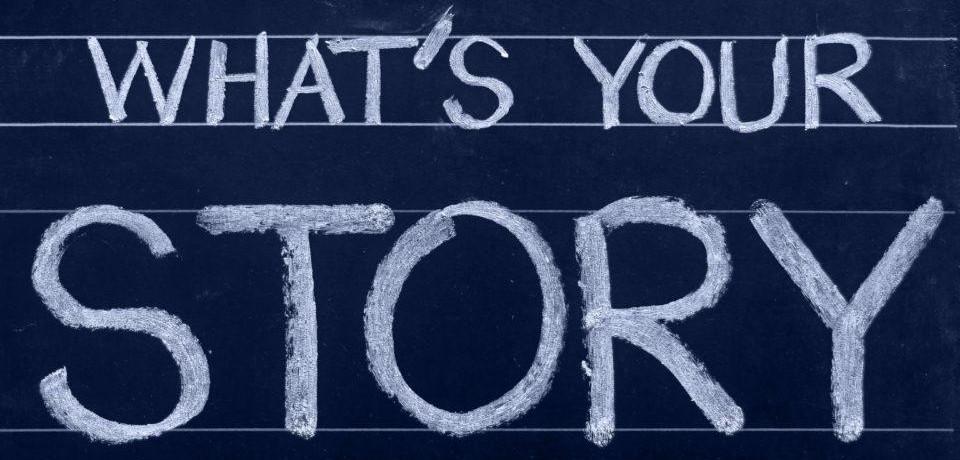
Bo Klindt Poulsen & Miriam Dimsits
This article discusses the question of making sense out of working with ePortfolio in adult education. The article presents the results of a small-scale survey among adults in continuing education who have worked with ePortfolio as the central didactic principle. It is argued that many of the statements from the students concerning their understanding of ePortfolio processes are fundamentally questions of how to make sense of the ePortfolio tool, both in their professional and personal lives. This calls for a didactical stance with the teachers who use ePortfolios, based on empowerment through meaning-making, in order for ePortfolios to make sense. It is suggested that two relevant didactic perspectives for making sense of the world can be found in theories of biographicity and metaphor work. Moreover, a strong didactic stance that supports sense-making must be based on a strong teacher role, with the teacher as the primary sense maker.
How does it work? What does it mean?
When we work with new digital technologies, be it privately or professionally, we are often very preoccupied with how this technology works. Is it easily accessible, or does it demand high-level IT skills? Does it support and ease me in my daily work, or is it another new time-consuming task? These questions are obviously important and very intuitive, when we encounter digital technology. Often we receive surveys or questions on new technology that has been implemented in our life, asking us to evaluate the functionalities of this specific technology from a user perspective. What we perhaps are not asked that often – or what we do not often ask others, for instance our students – is if and how this technology makes sense to us, in our lives and in our professions, and how it can support empowerment processes.
As a part of the Erasmus+ funded project “Empowering ePortfolio Processes” we, the authors of this article, investigated the user perspective on the digital technology “ePortfolio”, through a survey among students in adult education. Quite a few of the questions in our questionnaire were preoccupied with exactly the understanding of technology as something primarily related to functions and functioning. However, quite a few of the answers rather surprised us. Instead of merely evaluating the functionalities of ePortfolios, the students pointed to issues of meaning and making sense of the ePortfolio in both a professional and personal sense.
In this article, we will present the small-scale study we made among students in continuing education and our results and perspectives on how to make sense of the ePortfolio. In the first part of the article, we present the context for the survey and the methodological perspectives. In the second part we present an analysis on the survey results; the analysis that underlines and points to the need of discussing meaning-making processes, when we work with ePortfolios. Finally, in the third part of the article, our own sense making of the analysis of the survey points us in a direction of a specific didactic approach that supports personal empowerment through meaning-making processes. It also points us to the fundamental didactic interplay in teaching as such, namely between the teacher, the students, the content and the learning tools.
ePortfolio in a Danish diploma program
The reconversion of educational programmes, courses and other forms of competence development to a far more digital world is a central focus all over the Danish education system. VIA University College, one of the largest providers of higher education in Denmark also centres its educational and didactical development on new digital learning spaces. (Delstrategi for digitalisering 2014 [Sub-strategy for digitalisation 2014]). The authors of this article are researchers and lecturers at the School of Continuing Education at VIA University College, and the context of this article is the development of digital perspectives in the field of continuing education, more precisely, the diploma programs offered as continued education at VIA. Diploma programmes in continuing education in Denmark consists of 60 ECTS distributed on a number of both mandatory and elective courses, and a final thesis. The diploma programme is on a bachelor’s level and awards the student with an officially recognised Diploma degree in a certain field, for instance career guidance, special needs education or management.
Digital development of the diploma programmes is in the forefront of pedagogical and didactic development also in the strategy of the School of Continuing Education at VIA, and many lecturers experiment with different kinds of ‘blends’ between more classic teaching approaches and digital learning spaces. Few, however, have actually worked with ePortfolios as a didactic foundation for diploma courses or other teaching activities. Not least because, we suggest, that the current digital portal for teachers and students at VIA does not support portfolio thinking. The system is a blackboard system that helps teachers and students store and organise the curriculum, but fundamentally, it is not constructed to support integration of multimedia or to work dynamically with learning processes between teachers and students.
We researched the practices at the School of Continuing Education as thoroughly as possible, considering that the School offers more than 30 diploma programmes and more than 400 courses in these programmes every year. We only found one course that consequently and continuously uses ePortfolio as the central didactic principle. We cannot rule out that we might have overseen other existing practices in the complex and immense field of diploma courses at VIA, however; it would only support our central finding that the work with ePortfolio at the School of Continuing Education is sparse, uncoordinated and privatised to the single lecturer.
The one course we did find that is didactically based on the use of ePortfolio, both as a learning space and a validation tool, is a course in the diploma program in Vocational Pedagogy, a program that pedagogically certifies teachers in Danish VET-schools. The course is, rather tellingly, an elective course that focuses on digital technologies in teaching, and it is called “Digital technologies in VET-programs”. Thus, it is not that strange to find a developed didactical perspective on ePortfolio in such a course.
The learning objectives of this course are centred on digital competences and aim at supporting the student’s competence in handling digital technologies in the perspectives of didactic and learning theory; to take part in professional and multi-professional collaboration on developing teaching and learning, based on digital technologies; take on the responsibility of using digital technologies in planning, implementation, and evaluation of teaching and learning; and developing digital didactical courses targeted at different participants. (Curriculum Diploma Programme in Vocational Pedagogy 2016.)
The central digital technology that the students work with during the course is ePortfolio, and this didactic choice is made beforehand by the lectures attached to the course. The lecturers substantiate their choice of ePortfolio with this argument: they (obviously) cannot cover all available digital learning and teaching technologies in a course, the nominal length of which is eight weeks, therefore, they choose to focus on the one digital technology actually mentioned in the government order for VET-education: ePortfolio. In other words, for most VET trainers, working with an ePortfolio as part of their teaching is mandatory.
Thus, the course in “Digital technologies in VET-programmes”, offers a double perspective on ePortfolio to the participants. It supports the development of their didactical competence in using ePortfolio as a digital technology in their teaching, and because they themselves are students who are expected to create an ePortfolio and will be validated through the ePortfolio, the ePortfolio also becomes a tool for the development of these VET trainers’ personal learning. Then, as we shall develop later, the question of making sense of an ePortfolio not only becomes professional and didactic, but also involves the personal space and questions of biographical meaning.
Methodological perspectives
In order to examine a student’s perspective on ePortfolio, we created an online survey that was sent to three different classes of the course “Digital technologies in VET-programmes”. The survey was a qualitative questionnaire with ten open questions, asking the respondents for statements on topics such as challenges and possibilities of ePortfolio, competences needed in order to create an ePortfolio, and their own definition of the concept “ePortfolio”. Two of the classes had completed the course in autumn 2016 and the last class was the current class in spring 2017. We emailed a link to the online survey to all 48 students in the three classes. Three emails were returned because the addresses the students had provided were no longer in use. Of the then 45 possible answers, we received 15, which amounts to a response rate of 33%. We had hoped for more, but it turned out that the 15 answers were relatively equally distributed on the three classes. We do not argue that this small survey is a representative sampling of all students that have taken part in this course, let alone representative of the experience of working with ePortfolio for adult students at continuing education at large. However, from the statements that the respondents provide in the survey, we find a number of relevant reflections and perspectives on ePortfolio, both as a challenge and a possibility for empowering the teacher’s role, and for empowering students’ learning processes.
We have collected, compiled and analysed the answers from the respondents through the lens of meaning-making, that is, we have focused on the statements where the respondents directly or indirectly touch on how to understand or make sense of ePortfolios, both as a concept and as a learning space. In the following paragraph, we shall present the central results and discussions from the students’ perspectives. Afterwards, we will introduce a theoretical perspective on biographicity and metaphor-making that we suggest can help handling some of the uncertainties of making sense of the ePortfolio that is voiced in the statements of the respondents.
“You need to be brave to open up”
The students defined ePortfolios in different ways. Some used descriptions that points to the technological and digital side of the ePortfolio, defining them as “Electronic note sheets”, “A comprehensive work folder or briefcase”, “An electronic diary”, “A collection of materials, assignments, papers, notes, links, etc. in a digital form. Everything is stored in one place, and selected/relevant persons can access the portfolio”, “Instead of storing various notes, comments, printouts, etc. physically, this storage is done digitally” were some of the definitions put forward by the respondents.
Others defined ePortfolios by the processes connected with portfolio work, pointing to the processual and reflective nature of much portfolio-work: “A digital technology is used to describe and reflect on your work, for instance through a blog”, “An online presentation of the student’s products and process during the development and construction of the product [this VET-teacher points to digital portfolios that document the creation of concrete products, for instance in construction or gastronomy]”, “A tool for reflection”, “A digital folder that documents my reflections before, under and after classes”, “My own research question”, were statements from another group of respondents.
Sixty percent of the respondents had never used an ePortfolio before taking this concrete course in digital technologies in VET-programmes. Forty percent had used an ePortfolio before participating in the course. Subsequently, the respondents were asked if they conceived ePortfolios as suitable tools for validation, for instance validation of students’ learning or the qualification of applicants to a vacant position.
The respondents were asked to assess this question by pointing to a value on a scale from 0 to 5, where 0 represented “not at all” and 5 “to a very high degree”.
Most of the respondents answered the question with a 4 or a 5 on the scale, indicating that they found ePortfolios very well suited and relevant for working with assessments. One respondent answered the question with a 2 on the scale, indicating to some reservations and critical perspectives on ePortfolios as tools of assessment.
This critical perspective was elaborated afterwards, where the respondents were asked to be more specific about their assessment. The reservation to ePortfolios as tools of assessments, then, was described in this way: “The ePortfolio helps us gain an insight into the student’s process, but it cannot stand alone. You have to attach ‘words’ to the portfolio, for instance through conversation with the student on the different parts of the portfolio.”
Thus, the critical perspective is not so much directed at the ePortfolio as tool of assessment per se, but how this tool is used. And the respondent points to a central reflection – that we cannot regard the ePortfolio as an objective illustration of a (learning) process, rather, we must understand it as another way of getting insight into creative and reflective processes, that has its strength in opening for different perspectives and dialogues with the creator of the portfolio.
The respondents that gave predominantly positive evaluations of ePortfolios as tools of assessment pointed to the potentials of enhanced transparency for both teachers and students in the learning processes: “When a student reflects on her work [as she does in an ePortfolio], the learning processes are reinforced”, “It is a good way to look a bit deeper into the student’s thoughts”.
Digital competences
Most of the respondents indicated that you can create ePortfolios with just basic digital competences: “Be able to use a computer”, “You can easily create an ePortfolio with just a few digital competences, if you just have the interest”, “A bit of it skill”, “Ability to operate a computer”, “Ordinary IT skills”, “Generally relevant IT skills in order to create, use and maintain the portfolio”, “Common IT skills”, “A bit of insight into IT – can easily be picked up from another person”. One respondent took a different view on the level of it skills, stating that creating an ePortfolio required “good IT skills”. Only one of the respondents focussed on other skills apart from IT skills, stating that, “I need to be able to formulate my reflections”.
Overall, the students felt they learned new skills creating an ePortfolio. Their responses fall in two categories: one focusing on new digital skills and one focusing on new reflection skills. In relation to new digital skills, the respondents pointed to “a bigger digital knowledge”, working with “video”, “an understanding of digital learning tools”, “my digital skills are enhanced”. In relation to new reflection skills, the respondents mentioned: “Greater awareness of own reflections and possibilities for knowledge sharing”, “understanding of digital learning processes”, “I’ve become more skilled at reflecting on theory and connect it to my own teaching in practice”.
The respondents were asked to assess this question by pointing to a value on a scale from 0 to 5, where 0 was “non-existent” and 5 “very high”.
Most respondents answered 3-5, indicating a level of digital skills from intermediate level to high level. The answers do not allow us to conclude whether these were their level of skills before they participated in the course in digital technologies in VET-programs. But given the fact that quite a few of the respondents in an earlier question stated that their digital competences were enhanced through working with digital portfolios, and since digital portfolios were an integrated part of the abovementioned course, taking part of the course seems to have influenced their digital skills level. The point, however, is that when working actively with digital portfolios, either for oneself or as part of a study program, then enhanced digital skills levels seem to be the result for the participants in this small survey.
Benefits and challenges of using ePortfolios
The students stressed that the benefits of using ePortfolios are multifaceted, but the keywords are visibility, reflection and formation. The students expressed that you can show and present your learning and make your learning very visible. Everything is collected in the same place, which makes it easy for you and relevant for others to access your learning space.
They viewed the ePortfolio as a source that both enables your reflection on your learning process and makes your reflection visible. As a student put it: “I came to put down something in words that I would not otherwise get out”. In the words of another student in the questionnaire: “the ePortfolio makes the learning process of the student visible, which therefore makes the ePortfolio an excellent evaluation tool of the students own formation and development.”
The challenges expressed by the students can be divided in two categories. The first category has to do with digital skills. Some of the students put forward low digital skills and low digital confidence as the main hindrances for using ePortfolio and feeling comfortable with the resource.
The second category has to do with the didactics around and throughout the ePortfolio process. Some students felt they never understood the reason for and purpose of using ePortfolios, and found this a hindrance for engaging in the ePortfolio process. Others found it difficult to reflect by themselves and did not find it obvious how the ePortfolio could work as source of reflection. Another student also found that it stretched his boundaries that he was making his reflections visible to others, and as another student stated: “you need to be brave to open up”.
Support required
The responses on support required to use ePortfolio in current and further work expressed by the students show the need for digital competence and feeling digitally confident in order to use the resource.
The students stressed that if the digital confidence is not already there, you need a teacher to purvey that kind of confidence to the students by teaching concrete skills and knowhow linked with using the ePortfolio. Another aspect stressed by the students was the need of a collaborating community around the usage of the ePortfolio. The community is here defined as a working collective of fellow students or fellow colleagues including the IT-administrator in the school or workplace and others with managerial responsibility of the context-specific IT solutions.
Questions rising for the researchers
There are many perspectives to address further in both elaborate analyses and further research looking through the results of this small case study. What strikes us, however, as teachers and educators is the respondents’ statements that point in the direction of actually viewing a potential in ePortfolios but not finding this potential fully released, either by not knowing what working with the ePortfolio is for and also not knowing how to do the reflection exercises in the ePortfolio they were required to do. This we will address further in the following paragraphs.
Visibility, reflection and formation in ePortfolio
When we take the students’ perspective into account, one central question is brought to our mind as educators in adult education: What is the didactical point or argument of bringing ePortfolios as a digital tool into an educational situation, and if there is a point how does this point make sense to the students using them?
Educators and educational institutions can often be caught up in didactical trends involving digital technologies because they show the innovativeness of institutions or educators in an overt and obvious way. However, when we introduce a specific kind of method for working in an education programme, and when we want students to take ownership of this working method, we need to be aware of the fact that ownership evolves out of a continuous personal sense making process, where the educational activities are meaningful and worth engaging in, not just for a grade point but for the student herself.
This of course is a pivotal question in every educational setting, and if we could solve this with a single, well-developed method, the writers of this article would be running a private consultancy firm, be very wealthy, and only writing articles out of our infinity pool in the Cayman Islands.
What we have looked into, however, are two theoretical perspectives from the world of adult education and career guidance that can be useful didactical stances that can embrace and endow ePortfolios as a working method and whose potential as didactical stances can be released through ePortfolios, namely the concepts of biographicity and metaphor-making.
Supporting biographicity
The concept “biographicity” was first put forward by German sociologist Martin Kohli (1978) and was later introduced into the field of adult education with German professor in adult education, Peter Alheit.
Alheit argues that a common mistake when educators in the adult education sector meet resistance and frustration from adult students is that educators tend to apply more therapeutic methods in their teaching. This is not the job of educators, since the situation that causes resistance and frustration not only applies for the students, but also for the educators and the society as such. The situation that has caused resistance and frustration often stems from a much larger societal or structural situation that has trapped the individual in a certain context or situation. Therefore, bringing therapeutic means into the classroom would just individualise structurally created problems. What we need to look into, Alheit argues, is why and how people in different societal fields seem to cope with their problems without the use of therapy or adult education for that matter.
Alheit argues that all people, human beings, have the cognitive ability and competence to reinterpret the specific contexts and different life experiences that happen to them, an ability Alheit coins biographicity (Alheit 1994).
Research shows that this ability occurs in life crises and is a hidden ability to live your life, find agency and meaning in transitional periods (ibid. 238).
In modernity, this ability seems even more important. Modernity has changed structures, induced rapid and constant changes in society and made expectancies for different life phases more opaque and uncertain. Our lives will always include major transitions, but as a consequence of modernity, this might happen more often and more randomised compared to more traditional societies. You may lose your job because of global competition; you may need to start over on a new career path in a new profession, where you might learn something that challenges your biographical knowing of society and yourself.
Nevertheless, because human beings have this biographical ability, they manage to work their way through these transitions. We are both subjects and structural beings, and we cannot help continuing making plans of ”what we are in” and making sense out of ”what we are in”. This is a gateway to our individual identity construction as well; by editing, combining and reinterpreting the fragments in the transitional period, we understand who we are and show it to the world in the biographical account that each person produces in a time of crisis (Alheit 1994, 234-239).
Alheit’s central point here is that educators should support this natural ability in the education system. Learning, particularly for adult students, involves great challenges of the students biographical knowing. As educators, we experience this in students’ passiveness, students’ aggression and frustration and different kinds of resistance behaviour in the educational setting. These kinds of resistance behaviours can be signs from the students, that neither what you as a teacher are doing nor your working methods make any sense to the student, that the activities and the setting as such do not apply to the student’s biographical knowing of herself right now at this moment.
Instead of advising a specific behaviour or going into a deeper understanding of the psychological condition of the student, Alheit wants educators to support students’ natural ability of biographicity. There can be different practical and technical approaches in doing so, but in this article, we want to emphasise that this didactics of biographicity can be embraced in an ePortfolio.
The teacher with biographicity as a didactic stance may want to support the student in connecting and making sense out of the past, present and future, by reinterpreting the situation from a subject and structural perspective and in discovering the possibilities in the life of the student, that she has not lived (yet or in past). The teacher will do this by creating different kinds of activities that involves the students’ biographical reflections and work related to the content of the concrete course.
The ePortfolio can be a didactic tool for the teacher with this kind of didactic stance, because the ePortfolio per se is a working space that stretches over a continuum, and therefore has a potential for visualising the actual transition period and feelings of transitional crises a learning situation can be. The ePortfolio being a personal reflection space for the different kinds of themes and contents treated in the course makes it a visual showcase for the students’ sense making processes in the learning environment. The teacher can support the student in making sense out of the learning situation by trying to connect past, present and future perspectives and hereby making her identity and formation process an integrated part of working with ePortfolios.
Using metaphors for making formation processes visible
When respondents in our case study express a difficulty in knowing how to reflect, this raises an awareness about teachers sometimes making assumptions of students’ abilities without exploring the truthfulness of these assumptions. Therefore if you as a teacher expect students to reflect, you need to teach reflection, and you could teach it with this method presented in the next paragraphs. The perspective we want to draw forward is a method developed in the field of career guidance to help students or clients to expand their language and reflection on career related issues
The Canadian counselling psychologist and researcher, Norman E. Amundson has developed a theoretical and methodological framework for working with metaphors in career guidance practice, which we will present very briefly here.
Amundson sees metaphors as a certain type of language that expands and nuances the meaning of a certain situation or emotional state. It is a language that can add meaning to a situation or condition, and a language that can be a starting point of exploring meaning, and eventually exploring possible actions and transformations (Amundson 2010).
We use metaphors all the time without being aware of it; images are a central part of our language and communication form. The images we naturally include in our language come from everyday experiences. A person who is a leisure time tennis player, may find himself using images from this world to make general statements of certain situations of action and alertness, for instance, ”spin the ball”, ”know when to chase the ball”, ”stay on your toes” and ”put on your poker face in the game”.
Using images engages the listener and us, though not necessarily with the same metaphors. We each have different sensibilities and life stories that may attract us to different metaphors (Amundson 2010).
In career guidance practice, Amundson locates eight different career archetypes that appear as metaphors in language with different pictorial expressions.
When clients describe their career in past, present and future, you can learn to listen after images relating to these archetypes in order to work with these archetypes in the guidance process:
The career archetypes appear as language/images regarding:
- Inheritance (family history and expectations)
- Cycles (referring to growth and development)
- Actions (our will in the world)
- Fit (referring to matches in life)
- Travelling (referring to movement through life)
- Roles (lawyer, dad, soccer coach)
- Resources (Referring to human capital of all sorts)
- Stories (referring to people’s sense making of self and others) (ibid. 49–51)
The career guidance practitioner’s job is to help the client reflect on the different images relating to the different archetypes, by diving into the reservoir of metaphors connected to for instance the archetype of “roles”. “Roles” as an archetype draw on the world of theatre and drama, where images connected to these worlds can be used to explore the images the client himself has put forward for instance by saying: “I feel I have many roles to play in my life, sometimes I find that frustrating”. The guidance practitioner can help explore the roles by asking, “Who do you feel is directing the roles?” “Are they in the same play, and what is the story”, “When do you feel you can relax backstage?”, “Is there a role we need to rewrite or simply write out of the play?”
In this type of dialogue the guidance practitioner listens for a metaphor put forward by the client, “interviews” the metaphor to understand and expand the meaning of it to the client, and then offers new ones related to the topic discussed.
There are different ways of implementing this form of methodology in guidance practice. Amundson has developed different cards to be used along with different images, some practitioners use role play or writing exercises and others have just tuned and trained their dialogue to this type of practice.
The overall aim of career guidance is to support people in transitional periods, to raise self and world awareness that allows the individual to connect herself to the world, ideally in an empowering process for the individual in order for her to gain an understanding of her personal agency in the world.
The students in our research case made the point that they could see the ePortfolio as a means of reflection, and they could see the potential in ePortfolios for making the formation process visible.
In this respect, working with metaphors goes well together with the concept of ePortfolio as a learning tool. Working with digital tools can make working with images and visual effects very accessible as a means of communication, displaying and reflecting. The teacher, however, must be concerned about to what kind of learning goals working with visual images and effects may contribute. This is where we potentially see a career guidance perspective and a learning perspective synthesise in the ePortfolio. Metaphors provide a language that engages the student and teacher in shared reflection that can open for career related questions and discussions concerning the subject matter of the course. In this kind of reflection the teacher might be alert of different career archetypes that in a qualified dialogue can lead the student to reflect upon how the subject matter of the course relates to personal (not private) themes and values. Using different kinds of metaphors to coin or label different situations in the course you are able to make the student’s progression visible to both student and teacher, and you create an engaging language that literally visualises the formation process of the student.
The teacher as primary sense maker
Our case study has shown that even though a large part of the respondents felt they had the digital skills needed, or felt they did acquire the skills easily and fast in order to work with ePortfolios, several statements still remain from the respondents about what the ePortfolio work is good for, what is the point of making reflections on my learning. Moreover, when respondents recognise a certain potential they still question how this might be released in this digital tool. With the concepts of biographicity and metaphor-making, we have drawn forward two perspectives that can serve as didactical stances and working methods for releasing the potential of the ePortfolio as an engaging and empowering practice.
Here we want to make, not a new point in the history of learning and education, but a point that is often forgotten when working with new digital technologies: There can be no didactic stance and working methods without… a teacher!
Whenever a tool or working method is introduced in a learning situation, the teacher introducing this method or tool needs to be a guardian of the whole process and learning situation in order to secure that the method or tool actually makes sense to the students. This applies to all educational contexts, but especially to adult students in continuing education, where time is limited and professional integrity at stake. “Why am I doing this?”, “Who am I doing this for?” are questions that if left unresolved for a longer period, students will not be engaging themselves in whatever method or tool you have introduced. The teacher wanting to introduce ePortfolios must consider her didactic stance and think through how and why this tool can make sense in the concrete teaching context. This will make it easier for the teacher to communicate the meaning explicitly, and implicitly enables the teacher to plan meaningful activities in the ePortfolio work.
Our two proposed perspectives for the teacher to take into account when working with ePortfolios, namely biographicity and metaphor-making, also challenge or change the role of the teacher. Depending largely of course on the ePortfolio activities created in the course, the teacher may develop a function that is more the role of a facilitator of reflection than of reaching specific learning objectives. This does not mean that the teacher as authority and responsible for reaching learning objectives is suspended when working with ePortfolios and making use of our proposed perspectives. It simply points to an important teacher awareness of the shift between different roles in the learning process of a course. The ePortfolio creates different opportunities for different kinds of learning activities, and in this respect, we need to consider what this demands of a teacher. In the ePortfolio, we see a potential for working with learning processes that synthesise learning didactics and career guidance didactics. Nevertheless, we must not be blind to the fact that this challenges traditional ways of thinking about the role of the teacher, and that the teacher needs to be competent in switching between different roles and at the same time meta-communicating to the students about these different roles of the teacher.
The ePortfolio creates opportunities for supporting biographicity, and making formation processes visible for instance by using metaphor work, but when it comes to releasing the potential in order for a learning process involving digital or analogous tools to make sense to students, we need to reinsert the teacher into the equation. The teacher is the primary sense maker, and the ePortfolio a valid tool in the students’ learning process.

This article was produced in the Erasmus+ (KA2 action) funded project “Empowering Eportfolio Process (EEP)”. The beneficiary in the project is Häme University of Applied Sciences (FI) and the partners are VIA University College (DK), Katholieke Universiteit KU Leuven (BE), University College Leuven-Limburg (BE), Polytechnic Institute of Setúbal (PT) and Marino Institute of Education (IE). The project was implementated during 1.9.2016–30.11.2018.
Authors

Bo Klindt Poulsen is Associate Professor in the School of Continuing Education at VIA University College. He is also a PhD student at Aarhus University, researcher at Research Centre for Lifelong Learning (VIA UC), head of the research programme in career guidance, and currently working on a research project on cooperation in career guidance.

Miriam Dimsits is Assistant Professor in the School of Continuing Education at VIA University College. She is an educator and trainer at the diploma programme in Career Guidance, and a key worker at the National Knowledge Centre for Validation of Prior Learning (VPL) and the research programme, Programme for Career Guidance (VUE).
References
Alheit, P. (1994). The “Biographical Question” as a Challenge to Adult Education. International Review of Education / Internationale Zeitschrift Für Erziehungswissenschaft / Revue Internationale De L’Education, 40(3/5), 283–298
Amundson, N. E. (2010). Metaphor Making. Your career, your life, your way. Richmond, B.C.: Ergon Communications.
Delstrategi for digitalisering [Sub-strategy for digitalisation]. (2014). VIA University College. Retrieved from http://www.via.dk/-/media/VIA/dk/om-via/dokumenter/organisation/strategi/delstrategi-for-digitalisering-2014-2017.pdf?la=da
Kohli, M. (1978). Soziologie des Lebenslaufs. Darmstadt u. Neuwied: Luchterhand Verlag
Studieordning. Diplomuddannelse i Erhvervspædagogik [Curriculum. Diploma Programme in Vocational Pedagogy]. (2016). Retrieved from http://www.via.dk/-/media/VOK/5ca26c88b7a9ebacba662fcd5c34bef0911401d5e2e1d4929472f78f4e09724f.pdf





